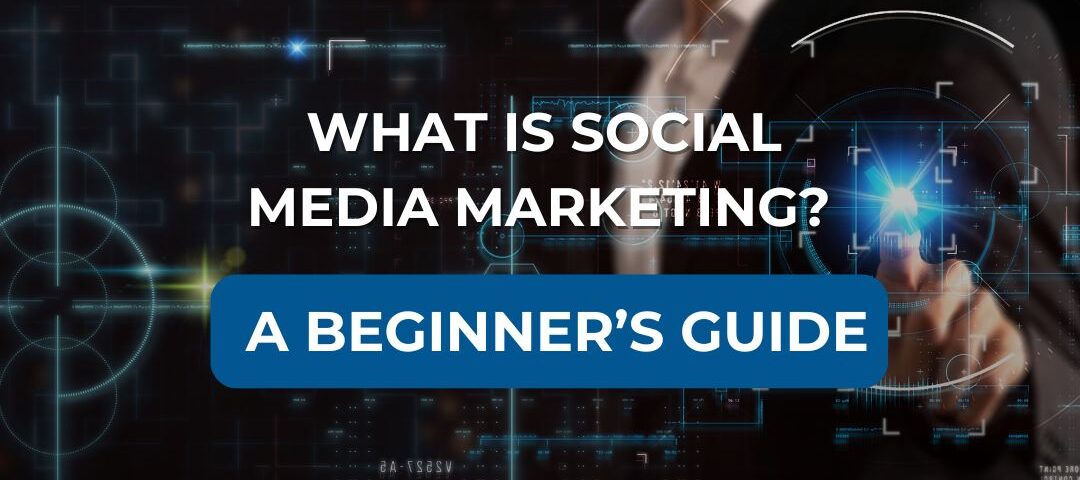What Is Social Media Marketing? A Beginner’s Guide
- Home
- What Is Social Media Marketing? A Beginner’s Guide

What Is Social Media Marketing? A Beginner’s Guide
In today’s digital-first world, having a strong online presence is no longer optional—it’s essential. Social media marketing (SMM) has emerged as one of the most effective ways to build brand awareness, engage with your audience, and drive business growth. Whether you’re a small business owner, an aspiring marketer, or simply curious, this beginner’s guide will walk you through everything you need to know about social media marketing and how to get started.
What Is Social Media Marketing?
Social media marketing refers to the use of social media platforms to connect with your target audience, build your brand, increase sales, and drive website traffic. This involves publishing high-quality content, engaging with followers, running advertisements, and analyzing results.
Some of the most popular platforms used in social media marketing include:
- X (formerly Twitter)
- TikTok
- YouTube
Each platform offers different features and caters to unique audience types, which we’ll discuss later in this guide.
Why Social Media Marketing Is Important
Social media has transformed the way businesses interact with their customers. It’s no longer just about posting updates—it’s about building meaningful relationships, creating conversations, and delivering value in real-time. Whether you’re a startup or an established brand, leveraging social media platforms strategically can help you stay relevant in a highly competitive market. From enhancing customer loyalty to driving measurable results, the importance of social media marketing cannot be overstated.
- Massive Reach: Billions of people use social media globally. Platforms like Facebook and Instagram allow you to reach audiences beyond geographical barriers.
- Cost-Effective Marketing: Compared to traditional advertising, social media campaigns can be run at a fraction of the cost.
- Improved Customer Engagement: Social platforms create a direct line of communication with your customers, which builds trust and loyalty.
- Real-Time Performance Analytics: From impressions to engagement and conversions, you can monitor campaign performance instantly and adjust as needed.
- SEO Benefits: While social signals aren’t a direct ranking factor, strong engagement and shares can help increase traffic to your website, positively influencing SEO.
Popular Social Media Platforms and Their Strengths
Each platform offers distinct advantages depending on your industry and audience:
- Best for: Community building, brand awareness, advertising
- Audience: Broad, age 25–65+
- Features: Pages, Groups, Ads, Messenger, Facebook Shops
- Best for: Visual branding, influencer marketing
- Audience: Age 18–35
- Features: Stories, Reels, Shop, IGTV, Ads
- Best for: B2B marketing, professional networking
- Audience: Working professionals, decision-makers
- Features: Articles, Company Pages, LinkedIn Ads
TikTok
- Best for: Viral content, Gen Z engagement
- Audience: Age 13–30
- Features: Short videos, Trends, Ads, Hashtag challenges
X (formerly Twitter)
- Best for: Real-time updates, news, conversations
- Audience: Age 18–49
- Features: Tweets, Spaces, Hashtags, Ads
YouTube
- Best for: Long-form video content, tutorials
- Audience: All ages
- Features: Videos, Shorts, Community tab, Monetization
Key Elements of a Social Media Marketing Strategy
To succeed with social media marketing, it’s crucial to have a strategy in place. Here’s how to get started:
Set Clear Goals
Determine what you want to achieve:
- Brand awareness
- Website traffic
- Lead generation
- Sales
- Engagement
Know Your Target Audience
Create a detailed buyer persona. Understand:
- Age, location, and gender
- Interests and behavior
- Preferred platforms
Content Planning & Creation
Create valuable and engaging content based on your audience’s interests. Use a mix of:
- Educational posts
- Entertaining content
- Product promotions
- Behind-the-scenes glimpses
Use tools like Canva, Adobe Express, or InShot for content creation.
Posting Schedule
Be consistent. Utilize a content calendar to plan your social media posts. Tools like Buffer, Hootsuite, or Meta Business Suite can automate publishing.
Engagement and Community Building
Respond to comments, DMs, and mentions. Create polls, ask questions, and share user-generated content to build a community.
Track and Analyze Performance
Review your analytics weekly or monthly. Track:
- Follower growth
- Engagement rate
- Click-through rate (CTR)
- Conversion rate
Refine your strategy based on performance insights.
Organic vs Paid Social Media Marketing
Understanding the difference between organic and paid social media is crucial:
Organic Social Media
- Free content posted to your followers
- Builds trust and long-term relationships
- Great for brand storytelling and engagement
Paid Social Media
- Sponsored posts or ads that reach a targeted audience
- Ideal for faster reach, lead generation, and conversions
- Platforms offer detailed targeting options (age, interests, behavior, location)
Best results come from using both strategies together.
Common Mistakes to Avoid
Before diving into social media marketing, it’s important to recognize some common pitfalls that can hurt your brand’s online presence. Many businesses jump onto platforms without fully understanding how to leverage them effectively. These mistakes can hinder growth, reduce engagement, and lead to frustration. Let’s explore the key errors to watch out for—starting with the absence of a clear strategy.
- Not Having a Strategy: Posting randomly without a goal leads to low engagement and wasted time.
- Ignoring Analytics: Without tracking, you won’t know what’s working.
- Being Inconsistent: Posting regularly builds familiarity and trust.
- Over-Promotion: Focus on value and storytelling rather than just selling.
- Ignoring Comments or DMs: Engagement is a two-way street. Interact with your followers genuinely.
Tools to Boost Your Social Media Marketing
To streamline your efforts, here are some essential tools:
- Canva: For designing graphics and stories
- Buffer / Hootsuite: For scheduling posts
- Meta Business Suite: For managing Facebook and Instagram
- Google Analytics: To track website traffic from social media
- Later: For visual Instagram planning
- CapCut: For short-form video editing
Final Thoughts: Start Small, Stay Consistent
Social media marketing can seem overwhelming at first, but it becomes manageable once you develop a strategy and stick to it. Start with one or two platforms where your audience is most active. Focus on creating quality content, engage genuinely with your followers, and monitor your progress consistently.
With time, patience, and creativity, social media marketing can become one of your most powerful tools for growth.

At Digital Bonjour, we believe every business deserves a strong digital identity. Our mission is to help brands stand out in today’s competitive virtual world with innovative strategies and impactful branding solutions.


Leave A Comment